Taking Measure
Just a Standard Blog
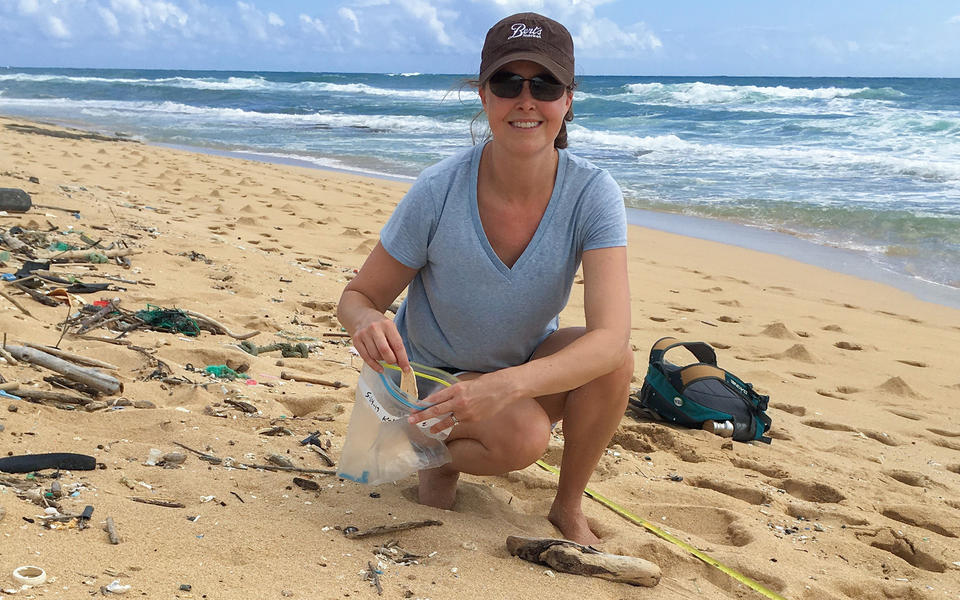
Me collecting marine debris using a transect at James Campbell National Wildlife Refuge in Kahuku, Oahu, Hawaii.
On the occasional weekend when I find myself avoiding house chores or lacking a social event, I wear out my 3-year-old daughter at Kualoa Regional Park, only 15 minutes from our home on the windward coast of Oahu. Yes, this is a major perk of living in Hawaii! There, the sun warms my skin, the breeze blows through my hair, and my daughter’s excited squeals pierce the relaxing sounds of the waves washing ashore. My daughter immediately starts making “snow angels” in the sand, chasing the water up and down the beach, and building sandcastles. I wish I could be as carefree as she is.
As a mom, I fret about her safety, covering her with sunscreen that won’t damage coral reefs, demanding that she wear her arm floaties, and reminding her to drink water. In between these duties, I find myself obsessed with another threat: the plastic trash that surrounds us on the beach. I struggle to ignore the urge to collect it. I would rather focus my attention on playing with my daughter, but there’s no way. I cannot gaze lazily at the turquoise horizon or close my eyes to relax. Instead, my angry eyes focus on the litter in the sand.
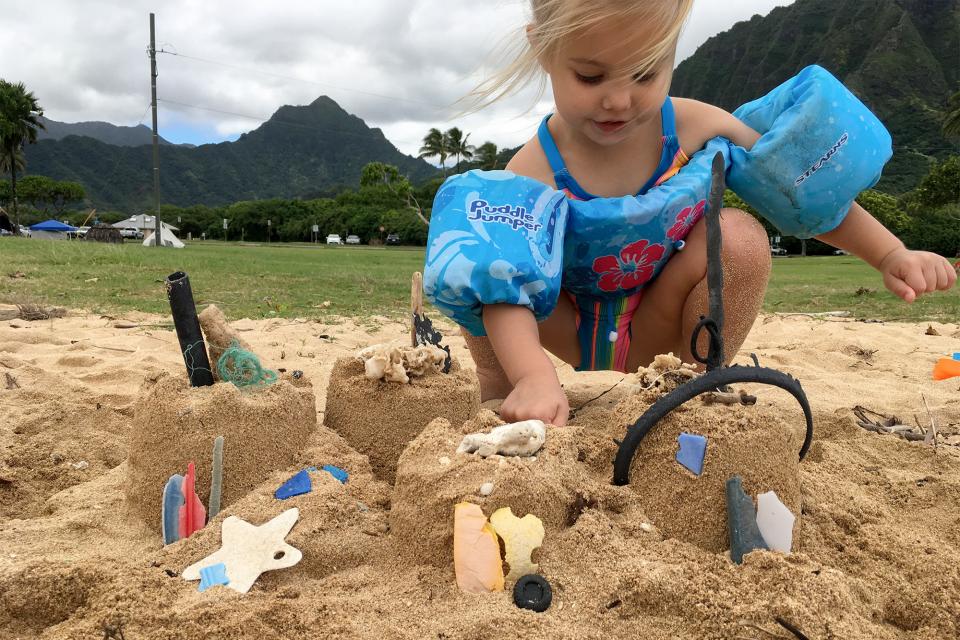
Furiously, I pick up everything from tiny specks to large objects made of colorful plastic and become increasingly motivated—and defeated—by the next piece of garbage just a step in front of me. I grumble under my breath about each piece I find. Here’s a white triangular fragment, here’s a black tube used in oyster aquaculture from across the Pacific Ocean, here’s a hagfish trap, a highly weathered bottle cap, a junk-food wrapper, a toothbrush, 10 cigarette butts, the corner of a foam takeout container and more fragments of hard plastic, nets, line, and foam than I can count. I become dizzy at the sight of it all. Removing it has become a full-blown obsession.
Before I know it, my daughter is frustrated by my lack of interest in her sandcastle and demands to go swimming. With two fistfuls of plastic trash and an aching back, I go over to address her concerns. On the way, I see more and more and more debris. There’s nothing I can do to collect it all today, and what I have collected will be replaced with more that washes in overnight.
I’m a marine environmental toxicologist, and I have been tasked with establishing a National Institute of Standards and Technology (NIST) lab in Hawaii to monitor, quantify and characterize plastic pollution to answer important questions about its sources and impacts. My obsession with clearing plastic from the beach is part of what drives me to learn exactly what the debris is and where it’s coming from.
Doing this in Hawaii makes sense, since this is one of the global hotspots for plastic marine debris. Plastic pollution is the only type of contamination I’ve ever studied that can be seen with the naked eye and held in your hands. Prior to this line of study, I measured invisible, yet highly toxic, chemical pollutants that have accumulated in the tissues of marine organisms.
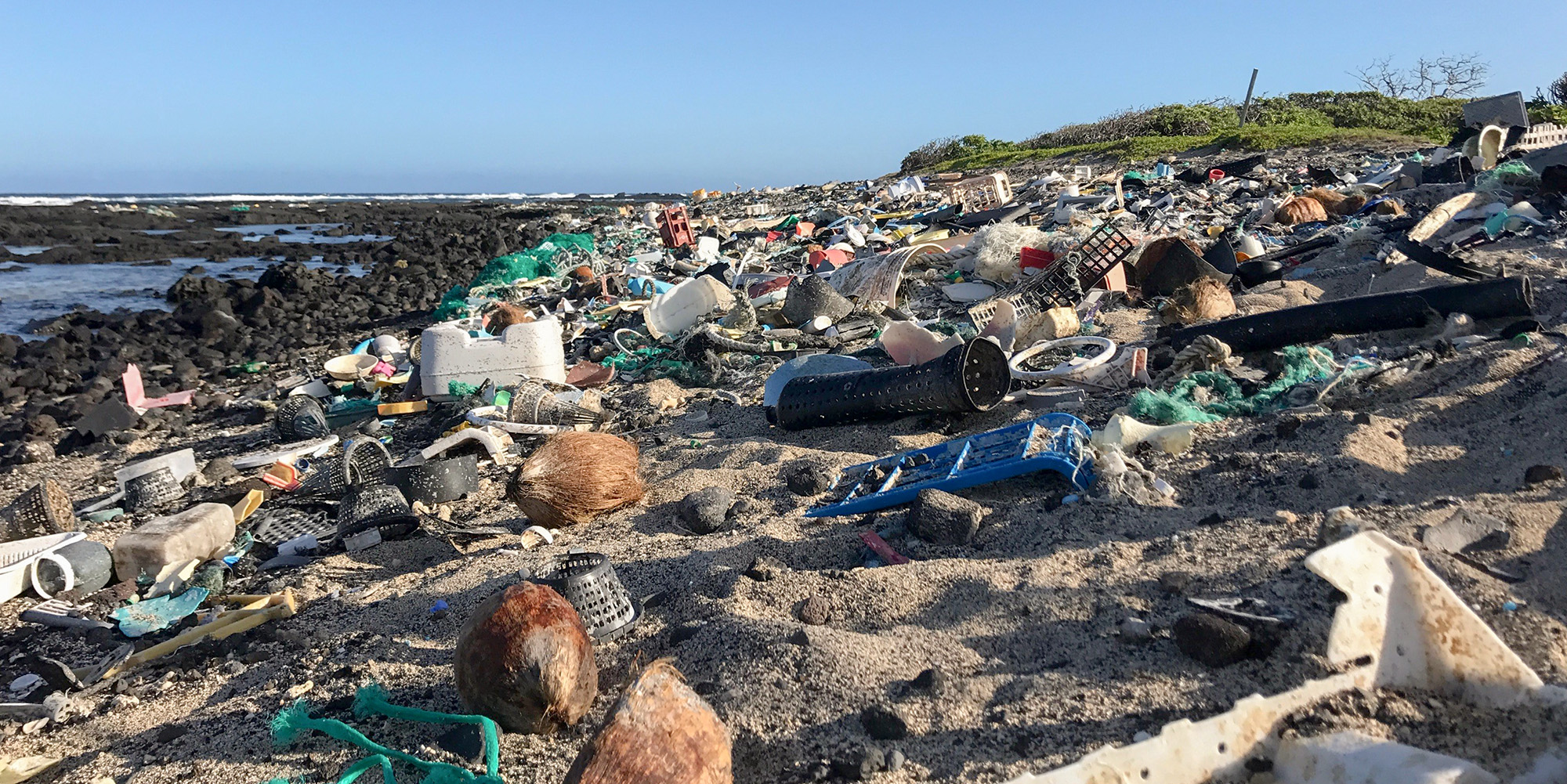
Since the 1950s, plastic production has exponentially increased for good, and not so good, reasons. Plastics are used for life-saving medical innovations, food preservation and safety, and they have helped to increase fuel efficiency because they weigh less than other materials. But plastics paved the way for a convenience culture that is hard to reverse. Imagine living without plastic storage bags or grab-and-go bottles of drinking water. For the parents of young children, it’s difficult to imagine getting through the day without food squeeze pouches or disposable diapers.
Doing without these conveniences is, of course, possible, but takes extra effort. State and local government programs in Hawaii have incentivized recycling of #1 and #2 plastic bottles and banned free disposable bags at the grocery store. As for plastic drinking straws, unless you need them for medical reasons, you can forget about them; they are simply not necessary. Cigarette butts are cellulose acetate, an artificial plastic polymer. If there aren’t enough good reasons to stop or never start smoking, then please dispose of your butts properly.
Environmental groups and local government regulators are paying a lot of attention to single-use plastics, and for good reason. But it’s important to note that Hawaiian debris, at least the stuff washing ashore on our windward beaches, is not from single-use products. Regulating such products will do little to solve the issue here. Most of our debris floats in from distant sources and appears to be related to fishing and maritime industries. When whole items wash ashore, they are predominantly crates, baskets, buckets, totes, fuel tanks, buoys, nets and rope. By analyzing these larger, identifiable items we can learn what polymers and additives they are composed of and then identify the source of the smaller, far more abundant weathered fragments that wash up on our beaches. The goal of this research is to identify the sources of plastic on which to focus reduction efforts.
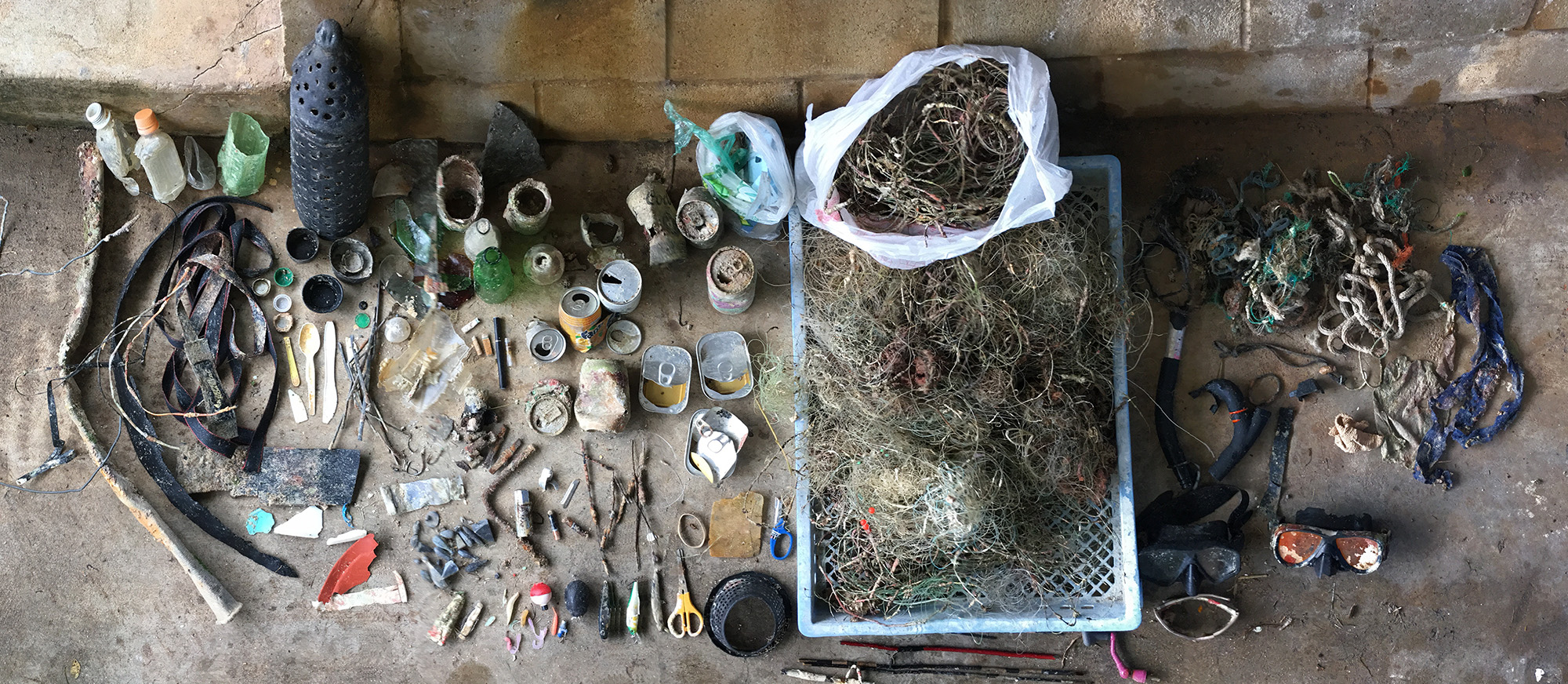
What can you do? Besides adopting the best environmental tenets—reduce, refuse, reuse and recycle—learn about the waste streams that come from the production of your food and make informed choices. This type of information is not easily accessible, so support causes that could bring about more awareness. For example, food-choice recommendations, such as those of Monterey Bay Aquarium's Seafood Watch program, could expand to include debris inputs from different fisheries or farming practices.
Support or become involved in innovative recycling processes (such as that of the Precious Plastic community) or initiatives to bring about a circular economy, where everything that we use is recycled and used again. Choose biodegradable, plant-based or recycled products, including when you’re buying clothing, furniture or construction materials. Participate in or support beach or roadside cleanup projects. Use your voice as a citizen and tourist if plastic pollution negatively impacts your community or the enjoyment of your vacation.
We all play a part. The problem of plastic pollution is so difficult to solve because it comes from multiple, international and ever-changing sources. Large plastic nets bulldoze coral reefs, plastic items become vectors for invasive species to move across ocean basins, vessels become damaged when entangled by debris, plastic fragments kill endangered species, and polluted beaches repel tourists, harming economies. Marine animals’ ingestion of plastic dilutes dietary nutrients, causes gut obstructions, and exposes the animals to a concoction of chemicals. When ingested by fish, nanosized plastics can enter their brains and affect their behavior.
Multiple solutions are needed, and many will require societal change and society’s acceptance of inconvenience. Unfortunately, plastic pollution is a growing threat, and by 2025, the amount of plastic being put into our oceans every year is predicted to triple.
Hawaii and our oceans are too beautiful and important to the health of our planet to allow this to continue. My hope is that society urgently reverses this trend so that future generations of children can play with their parents on trash-free beaches.
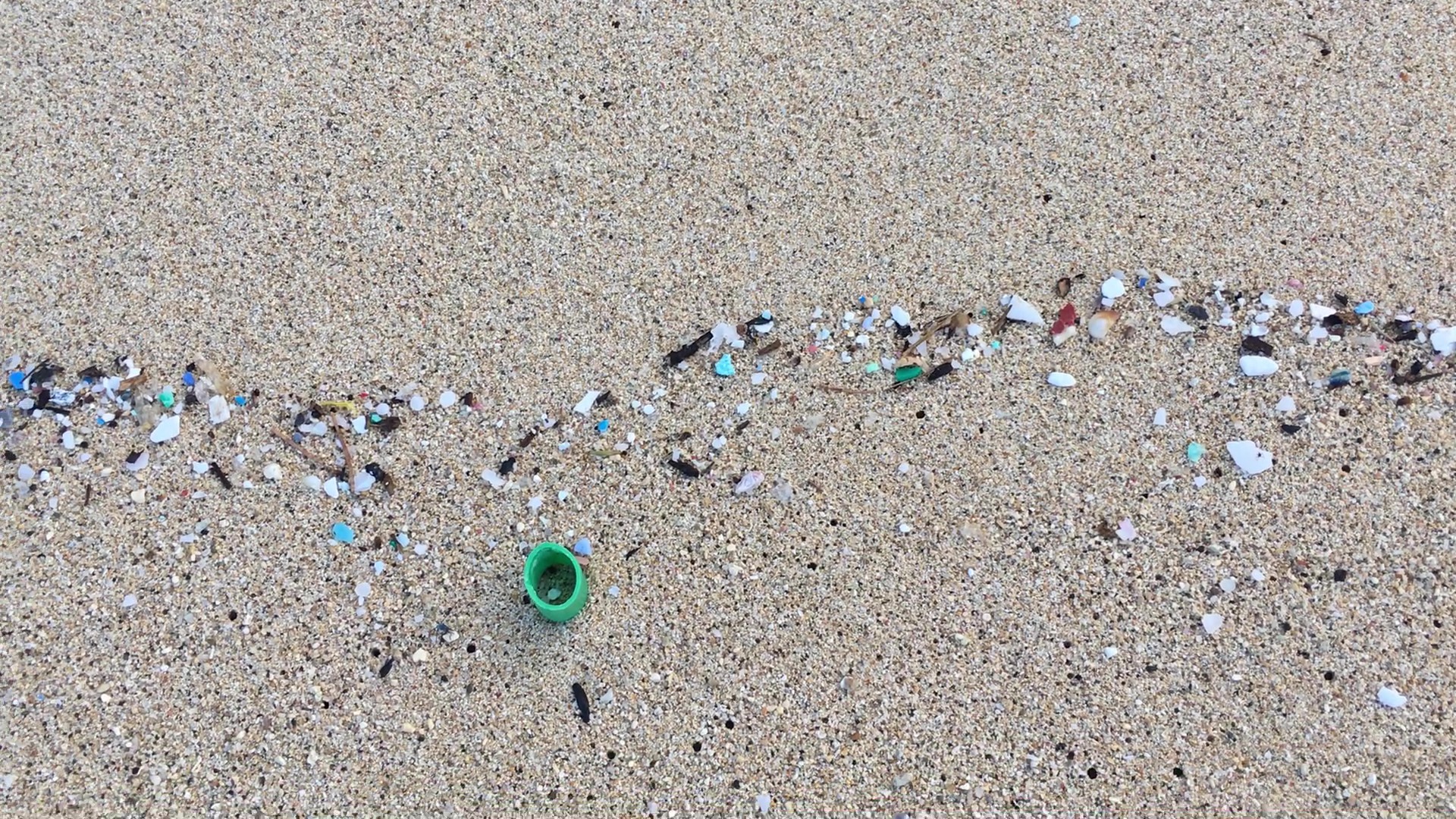
*Edited June 7, 2019, to correct a caption. The previous caption said that 15-20 tons of plastic trash washes ashore annually on a 9-mile section of beach. It is 0.6 miles.
About the author
Related Posts
Comments
In 1972 I lived in Japan. We spent a lot of time going to beaches. They were completely and totally covered with trash. I was told that because of the smallness of the island, the Japanese took huge barges way out to sea and dumped the stuff. Eventually it came back.
Mount Fuji was the same way, I couldn’t believe it, it was almost halfway full of garbage. I don’t know if all the Asian countries are the same way. But judging from the amount of garbage in the ocean, I wouldn’t doubt it. Buddhism, the primary religion of Asia, stipulates that everything is an illusion therefore dumping stuff in the sea is existentially irrelevant.
I am in a constant battle with plastic pollution on our beaches here in Hiroshima Japan and I know these plastic spacers and discs travel far, but it is devastating to see them get as far as Hawaii beaches where I grew up. Thank you so much for sharing these images and documenting the garbage you collect and research. We have monthly cleanups on beaches and rivers here, but there is so little awareness of the plastic problem in Japan.
I'd love to join one of your cleanups and chat next time I am back home to Oahu. We hold our monthly cleanups on the 3rd Sunday of each month.
Hi JJWalsh,
Thanks for the work you do, it's a tough battle, and for the invitation to a cleanup in Japan! Please let us know when you visit Oahu. We dont run our own cleanups, but we partner with several organizations that do. Instead, we perform research to understand the sources and impacts. You can follow our work on Facebook, Instagram, or our website https://www.hpu.edu/cncs/cmdr/index.html.
I have lived in Ka'u since 1990. Been surfing since 1958. The first time I came upon Kamilo beach 30 years ago there were miles of rope and line, mountains of netting and more broken plastic than a landfill. We have been cleaning it for decades now and it's still got plastic that washed in every high tide, twice a day. Thank you for the article and for the awesome work you do. Aloha.
Hi Ian,
Thanks for the work you do! Kamilo is the epitome of Hawaii's problem, it's tragic! We work with Hawaii Wildlife Foundation, so we are familiar with the struggles you have on that beach. If you're interested, you can follow our HPU research center's work on Facebook, Instagram, or our website https://www.hpu.edu/cncs/cmdr/index.html.
Everyday we walk our beach with another set of neighbors with 5 gallon buckets and we fill at least two with larger pieces of plastic. The tide lines are full of the small pieces that are hard to pick up! It's not from plastic bags or straws etc. Much heavier duty stuff that's been at sea for a long time. So maybe address banning heavy plastics instead of making all our stuff more expensive with the lame bans on straws and bags.
Hi John, I hear yeah! It's easy to quickly fill a bucket with debris here in Hawaii, it's a sad reality. The single-use bans are testimony that Hawaii cares, but you're right that they will do little to fix the problem on our windward beaches. The debris we receive is old and from far away, which makes it harder, but not impossible, to prevent. If you're interested, you can follow HPU's Center for Marine Debris Research's work on Facebook, Instagram, and our website https://www.hpu.edu/cncs/cmdr/index.html.
This is just so sad, but what makes it even more sad is that this beach is unhabited.
While walking the shoreline of several beach’s on Oahu, my eye caught the sight of turquoise, blue, green and white little bits of color. As a collector of heart shaped rocks & shells, I thought I found pieces of treasure. Upon returning home to Alaska, I did a little research of my own only to discover what it truly is. WOW… my heart breaks to see this waste!
God bless you for the work you are doing in Hawaii.
love






I saw the same type of plastic wash up on the shores in Hopkins, Belize when I was there on vacation a couple of weeks ago. It bothers me that plastic is washing up on shores everywhere. It will take more than a few concerned citizens to reduce plastic use. It needs a cultural shift and enforcement to change habits and perceived plastic necessity.